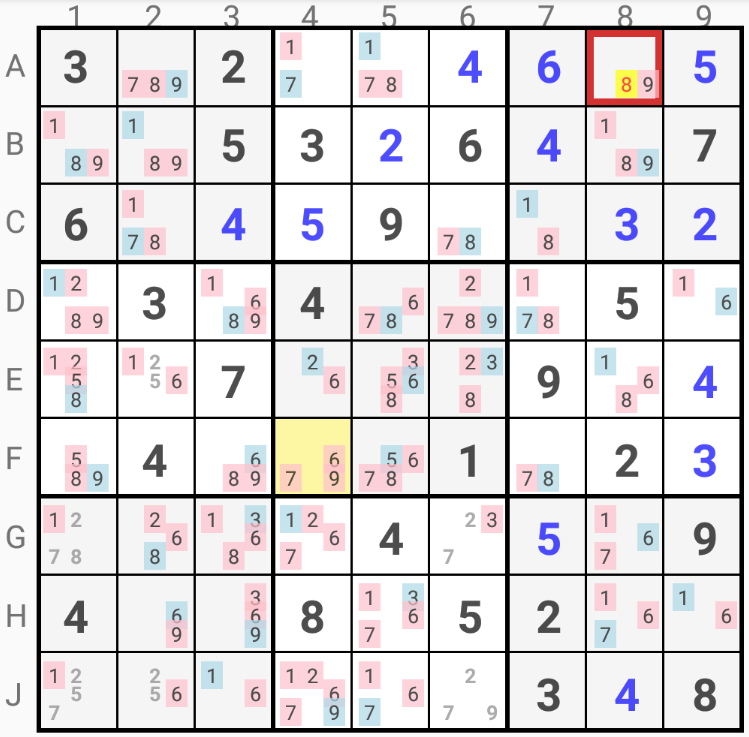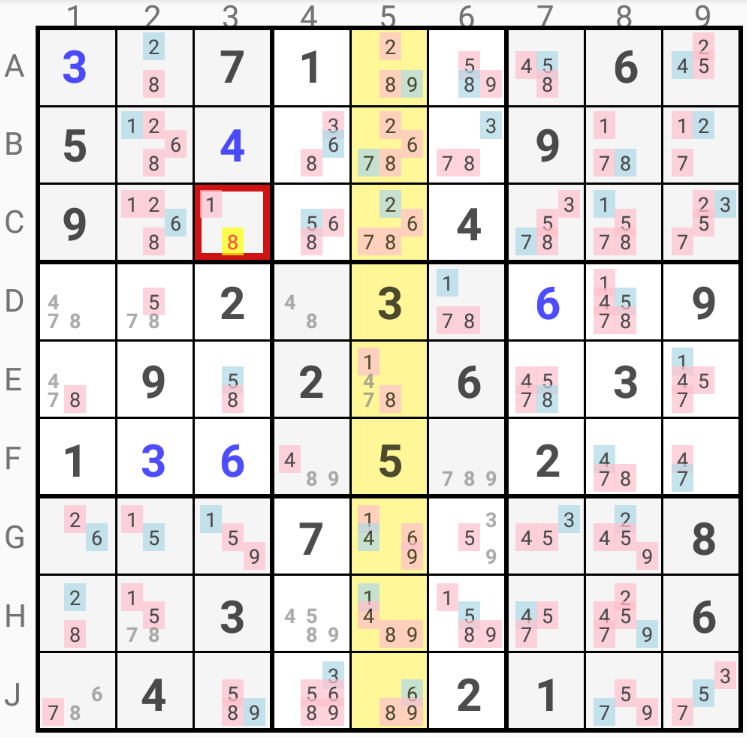Bowman's Bingo
This is a trial-and-error strategy. One makes the assumption that a particular candidate is the solution for a particular Cell and looks at the consequences. If this leads to an error, then the initial assumption is wrong and the related candidate can be eliminated from that Cell.
E.g. the initial assumption leads to the elimination of all candidates in a particular Cell or of one candidate from a region (Row, Column or Square).

In this example if candidate 8 were the solution in A8 then this would lead to the elimination of all candidates in F4. Hence candidate 8 can not be the solution in A8 and it can be eliminated in that cell.

In this second example if candidate 8 were the solution in C3 then this would lead to the elimination of all candidates 8 in Column "5". Hence candidate 8 can not be the solution in C3 and it can be eliminated in that cell.
This is one way of using the Bowman's Bingo strategy, i.e. trying to eliminate a single candidate. Now, one can actually only consider assumptions that do not lead to a contradiction. By chaining such assumptions, one can solve any puzzle. Dave Peru proposes an interesting methodology called Multivalue Elimination for selecting the most promising assumptions. For an example, follow select the most appropriate assumption for a Bowman's Bingo attempt.
You can practice this strategy by installing the SudokuCoach application on your Android™ device.
